The Starwave ASCENT 115 ED from Altair Astro is an apochromatic refractor that will appeal to both observers and astrophotographers.
The telescope is offered as an optical tube assembly-only package, meaning that additional accessories are required to use the telescope, such as a star diagonal and eyepieces for observing, or a field-flattener and optical reducer for astrophotography.
For this review we used our own items for observing and were loaned a Planostar 0.8x reducer from Altair Astro to use for imaging.
Refractors around the 4-inch (100mm) aperture mark are often what first spring to mind when we hear the word ‘telescope’ – and with good reason.
For many astronomers, a telescope of this size offers the best compromise between light-gathering ability, portability and indeed, price.
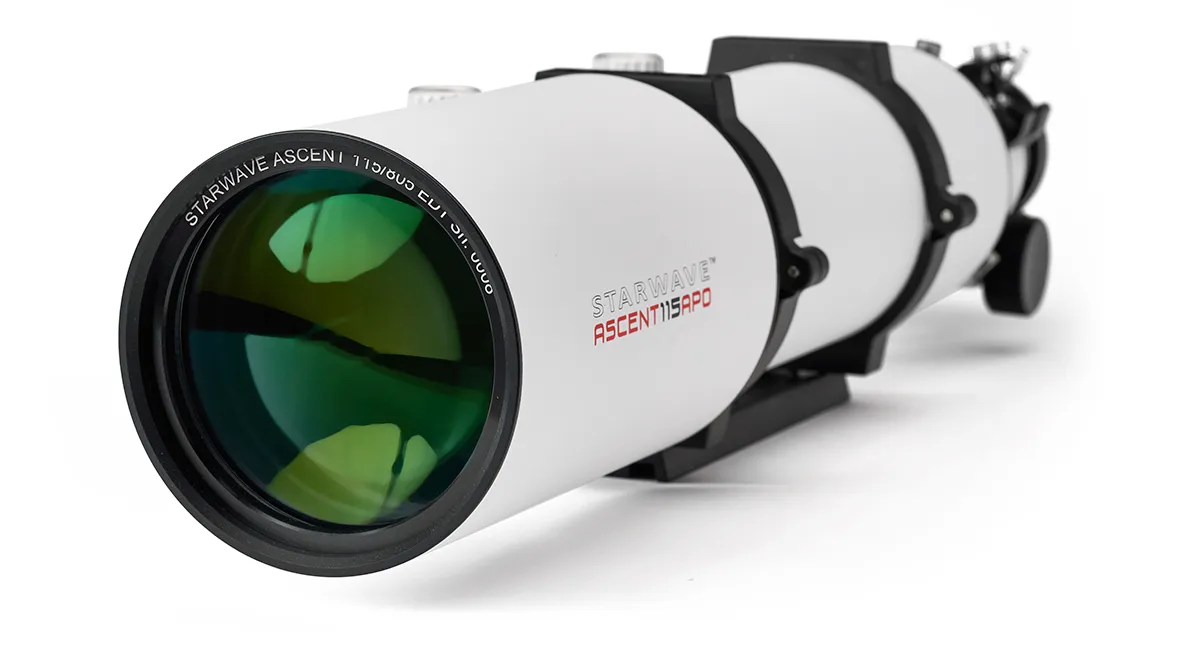
In fact, with its 115mm objective lens, the ASCENT 115ED offers around a 32% larger aperture than a standard 4-inch lens, while maintaining the comfortable weight and balance that makes this size of telescope a pleasure to use.
With the ‘galaxy season’ upon us – and presented with the unusual combination of a clear sky and new Moon – we opted to test the ASCENT 115ED for imaging first.
This was just a case of unscrewing the eyepiece clamp assembly and attaching the borrowed reducer directly to the focuser drawtube.
This sensible arrangement eliminates any slop that can occur when you are using clamps alone, and it ensures a nice square fitting to the optical tube.
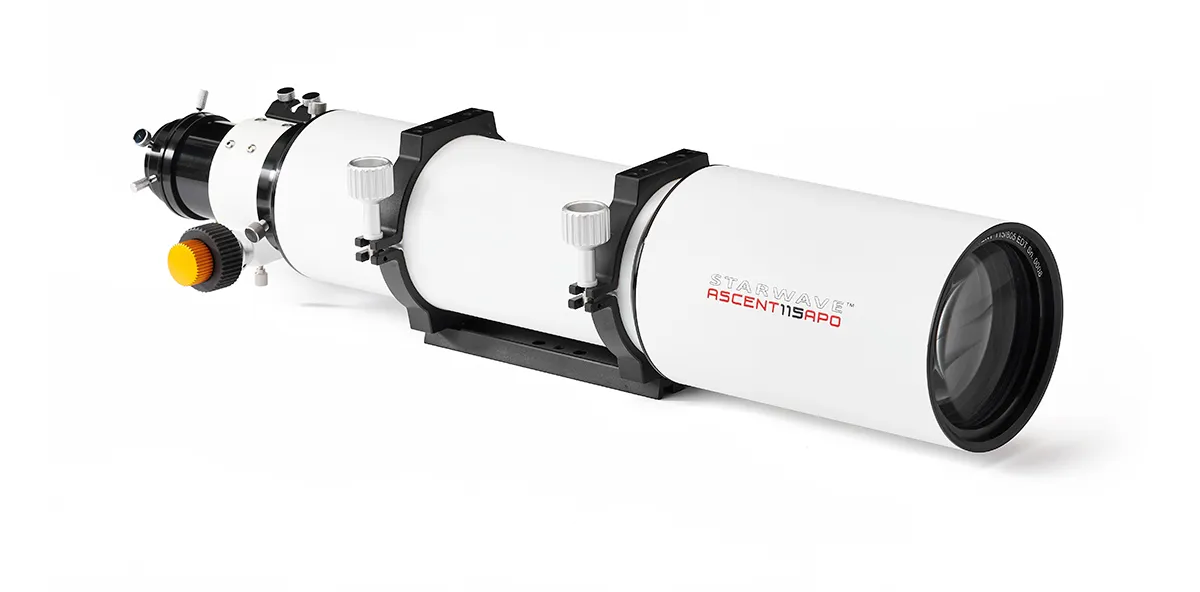
The telescope has a focal length that’s just over 800mm, and the supplied reducer takes this down to 640mm, so we paired it with our Sony ICX694-based CCD camera, which has a relatively small colour sensor and avoids the need for a field-flattener.
The resulting setup allowed us to photograph the galaxies in the context of their surroundings.
While setting up for photography we noted that the focuser drawtube extends over 90mm, and to achieve focus with our camera we used a good amount of this extension; we were pleased to note that the focuser held solidly with no droop.
With a Bahtinov mask in place, we found the process of manually focusing with the fine speed controller was uncomplicated.
Throughout the sessions, although the ambient temperature varied throughout the night by several degrees, only minimal adjustments were required to tweak the image back into perfect focus, which again was quick and simple to do accurately.
Our targets of choice were the spiral galaxy M106, the Leo Triplet consisting of M65, M66 and NGC 3628, and the rather comically named Whale Galaxy and Hockey Stick Galaxy (NGC 4631 and NGC 4656), along with a few other favourites.
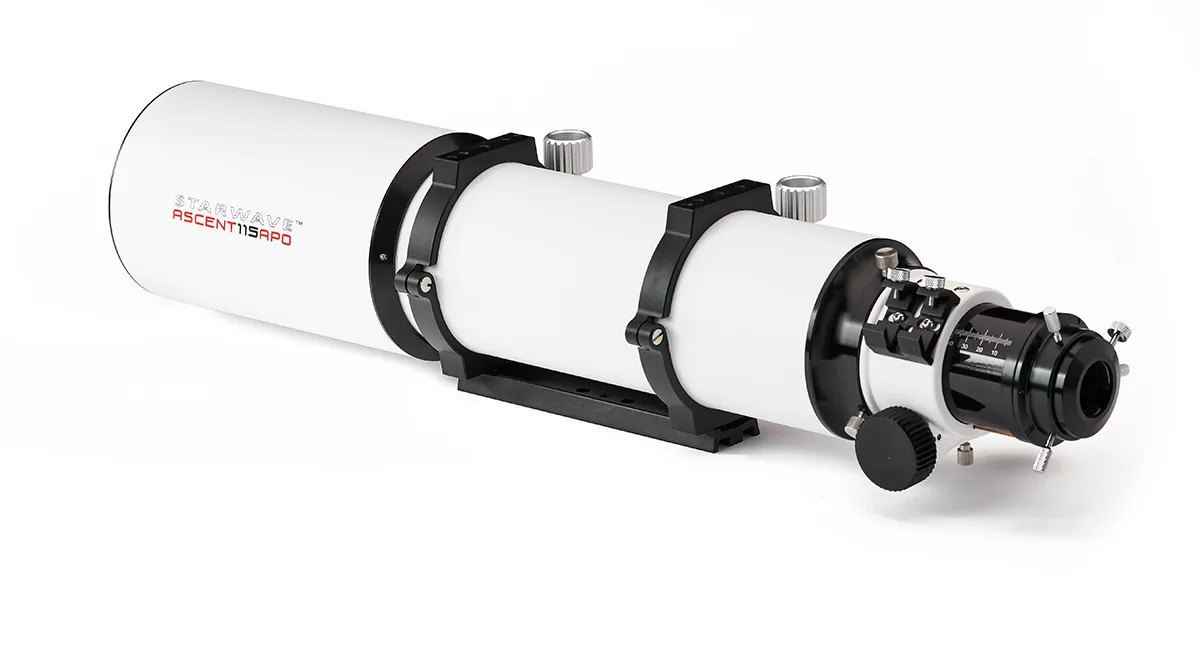
In total we spent around 20 hours using the ASCENT 115 ED for imaging, and it performed exactly as we hoped, being free of fuss and drama.
By that we mean there were no issues with odd star shapes, no unwanted reflections, no dew on the objective lens and no loss of focus during long exposures. It was just what we’d look for in an imaging scope, being easy to use and very capable.
We were also keen to use the ASCENT 115 ED with our eyepieces, and as the increasing brightness of the Moon made galaxy work impossible, we first turned to some lunar exploration.
The compact size of the telescope makes for very comfortable viewing positions, and we found this allowed us to take our time on the features, enjoying sharp views of shadows from central peaks across crater floors and wispy bright crater edges seemingly floating around the terminator.
Later in the review period we had a short window before moonrise to enjoy some galaxies too, with a particular favourite being the combination of Bode’s Galaxy and the Cigar, M81 and M82.
Our 13mm eyepiece offered 60x magnification, and this pair looked glorious within the same field of view.
An opportunity for solar observing presented itself, and we used our white light filter to enjoy the sight of a chain of sunspots.
Reasonably priced towards the middle of the market, the combination of aperture, optical quality and focal length in the ASCENT 115 ED provides a happy balance that make it suitable for all-round astronomical pursuits.
Starwave ASCENT 115’s lens examined
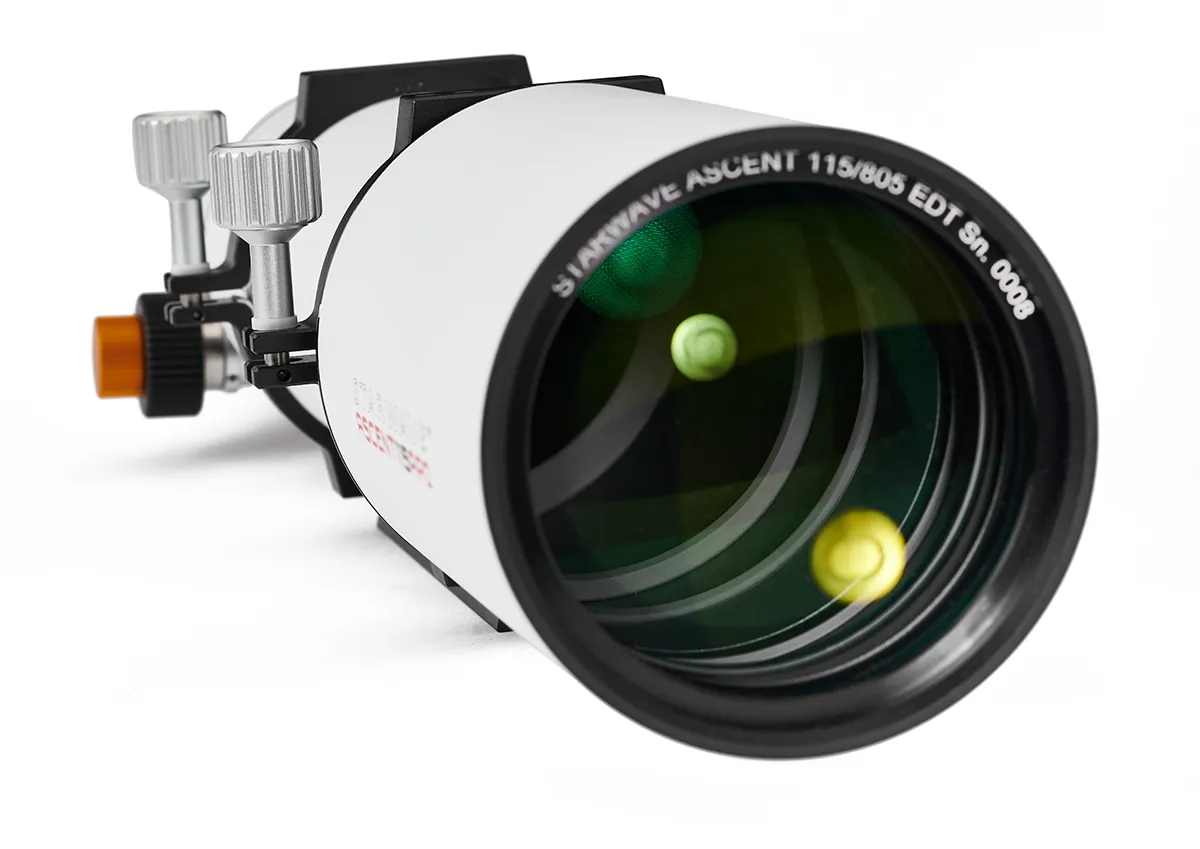
On the Starwave ASCENT 115’s dew shield, the abbreviation ‘APO’ is boldly declared in red capital letters.
This refers to the telescope being apochromatic, a term coined for lens systems that are able to bring the varying wavelengths, or colours of light, to a point of equal focus.
For our purposes this desirable setup means that eyepiece views will be brighter, crisper and more enjoyable, especially on bright targets such as the Moon or planets.
Less capable lenses can produce unwanted rings or coloured haloes, as unfocused light spoils the view.
For astrophotography the effect is even more dramatic, as cameras are unforgiving and will reveal flaws in the colour correction of a lens, especially on bright stars.
By extracting the red, green and blue channels from our images of stars and comparing the star size in pixels, we were able to see that the triplet lens in the ASCENT 115 is indeed apochromatic – all colours were brought to the same focus and the star size was pretty much identical for each channel.
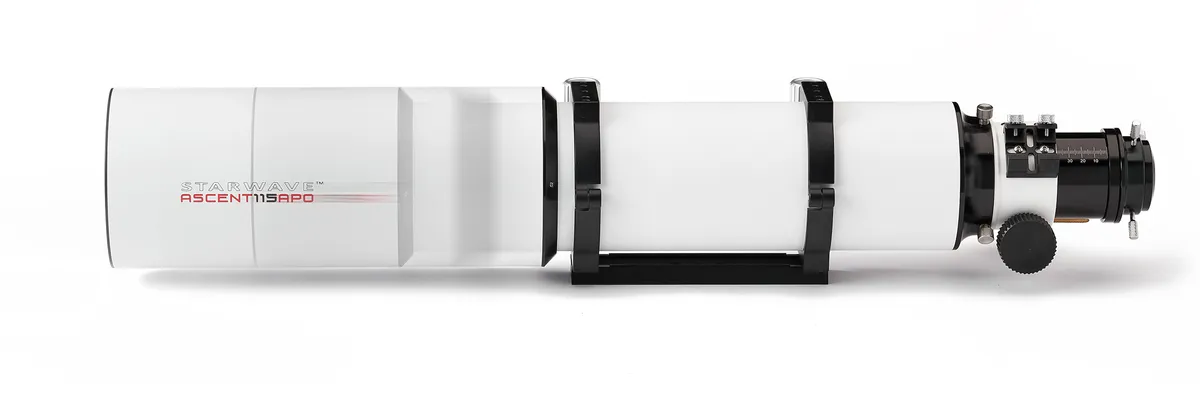
Altair Starwave ASCENT 115's best features
1
Aluminium tube
The ASCENT 115 ED tube is aluminium, with a durable white powder-coated finish and black trim. This construction allows the telescope to quickly cool down to ambient temperature outside, which is important for the best views and images to be acquired. Once acclimated the telescope proved very stable during use.
2
Tube rings
The telescope is supplied with a 200mm Vixen-style dovetail bar and matching black tube rings with easy-to-turn knobs. On top of each of these rings there are five threaded holes where other accessories can be attached. A shoe for an optional finderscope is fitted to the focuser.
3
Focuser
With a smooth rack and pinion design, the entire 2.5-inch focuser rotates to allow for precise image framing or more comfortable observing positions, while the graduated drawtube and 1:10 fine focus reduction ensure that at first rough, and then perfect focus can be achieved quickly.
4
Dew shield
Keeping the elements and stray light away from the objective lens is the job of the extending dew shield. It extends 110mm and glides easily but firmly, the snug fit ensuring it doesn’t drop down when the telescope points upwards. Likewise, the aluminium end cap holds securely in place on a felt strip.
5
Internal baffles
Inside the tube, behind the lens there are a series of rings, or baffles, that increase in thickness towards the focuser. These add stability to the tube, but their primary role is to reduce the amount of stray or unwanted light inside the tube that can reduce contrast at the eyepiece or camera.
Vital stats
- Price: £1,199
- Optics: f/7, multi-coated ED triplet
- Aperture: 115mm (4.5-inch)
- Focal length: 805mm
- Focuser: 2.5-inch rack and pinion; 1:10 ratio fine focuser knob
- Extras: Tube rings, finderscope shoe
- Weight: 7kg
- Supplier: Altair Astro
- Tel: 01263 731505
- www.altair astro.com
This review originally appeared in the July 2021 issue of BBC Sky at Night Magazine.

